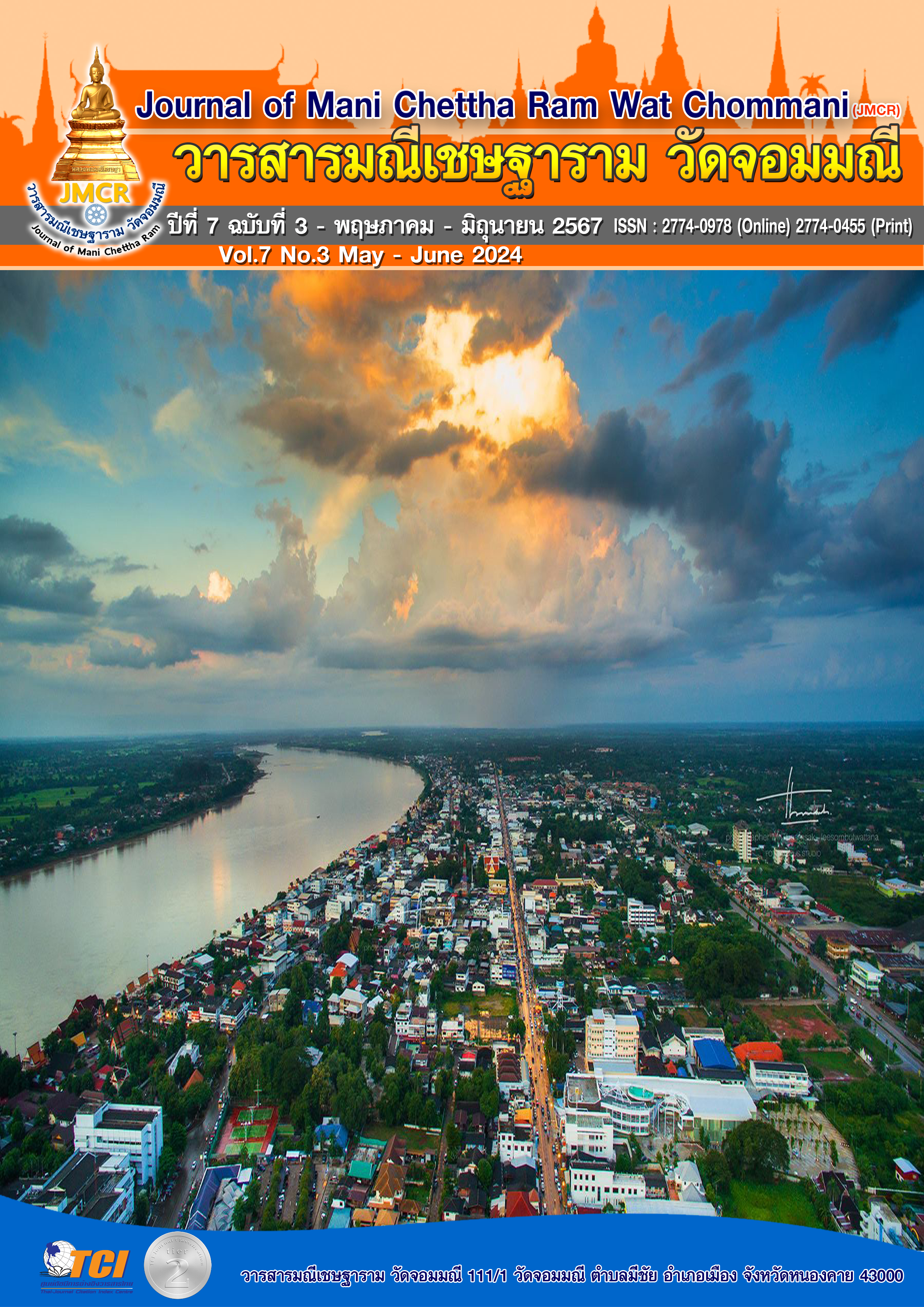A MODEL OF MONKS’ HEALTH CARE DRIVING ACCORDING IN SITUATION COVID-19 IN NAKHON RATCHASIMA PROVINCE
Keywords:
Model, Monks' well-being, COVID-19.Abstract
The objectives of this research are: 1. To study the development of monks' health in the COVID-19 situation. in Nakhon Ratchasima Province 2. To study Buddhist methods to promote the health of monks in the COVID-19 situation in Nakhon Ratchasima Province 3. To present a model for driving the health of monks in the COVID-19 situation. In Nakhon Ratchasima Province The research method is a combined method. During the quantitative research, a questionnaire was used. The confidence value was 0.863 from the sample group including There were 209 monks in Nakhon Ratchasima province. Data were analyzed using statistics, frequency, percentage, mean, standard deviation. and qualitative research Interviews with 10 key informants or people were analyzed descriptively and summarized in an essay.
The results of the research found that: 1. Level of opinions regarding driving the health of monks in the COVID-19 situation In Nakhon Ratchasima Province Overall, it was at a high level (x̄=3.89, S.D.=0.37). When considering each aspect, it was found that it was at a moderate level in every aspect. 2. Buddhist methods to promote the health of monks found that in terms of physical health To take care of your own health, both physically and mentally Mental health Having good mental health helps create a good atmosphere. Social health services are provided from government hospitals. 3. Model for driving the health of monks in the COVID-19 situation. In Nakhon Ratchasima Province health care Eat a healthy diet or exercise regularly. Community and social aspects take care of the lay monks. There is appropriate care for the food and environment of the monks so that they are conducive to Dhamma and Vinaya and those who practice Dhamma appropriately. The monks are leaders in the health of the community and society. Monks must have knowledge and understanding of modern medical principles and integrate them with health care principles.
References
กรกนก ลัธธนันท์. (2562). ความรอบรู้ด้านสุขภาพของนักศึกษาพยาบาลวิทยาลัยพยาบาลบรมราชชนนี กรุงเทพ. วารสารวิทยาลัยพยาบาลบรมราชชนนี, 35(1), 277.
กรมควบคุมโรค. (2566) ข้อมูลสำหรับการป้องกันตนเองจากไวรัสโคโรน่าสายพันธุ์ใหม่ 2019 (อินเทอร์เน็ต) เรียกใช้เมื่อ 12 มิถุนายน 2566. จาก https://ddc.moph.go.th/
viralpneumonia/file/introduction/introduction01.pdf
เจษฎาภรณ์ สุธรรม และคณะ. (2566). ความสัมพันธ์ระหว่างความรู้ด้านสุขภาพ พฤติกรรมการดูแลสุขภาพตนเอง และภาวะสุขภาพของพระสงฆ์ อำเภอลี้ จังหวัดลำพูน. วารสารสาธารณสุขล้านนา, 19 (2), 102.
ปิติณัช ราชภักดี และคณะ. (2561). พฤติกรรมการดูแลสุขภาพของพระภิกษุสงฆ์ในเขตเทศบาลนครอุดรธานี จังหวัดอุดรธานี. วารสารการแพทย์โรงพยาบาลอุดรธาณี, 26 (3), 199.
พระปลัดทัศนพล เขมจาโร และคณะ. (2565). รูปแบบการบริหารจัดการสุขภาวะพระสงฆ์ตามธรรมนูญสุขภาพ พระสงฆ์แห่งชาติ ของพระสังฆาธิการในจังหวัดพิจิตร. วารสาร มจร สังคมศาสตร์ปริทรรศน์, 11 (1), 280.
พระมหานิพนธ์ มหาธมฺมรกฺขิโต. (2561). รูปแบบการเจริญเมตตาภาวนาที่มีผลต่อสุขภาวะของผู้สูงอายุ. ใน รายงานการวิจัย. สถาบันวิจัยพุทธศาสตร์: มหาวิทยาลัยมหาจุฬาลงกรณราชวิทยาลัย.
พระสุริยา ฐิตสีโล และคณะ. (2565). การดูแลสุขภาพแบบองค์รวมของพระสงฆ์ในเขตพื้นที่อำเภอนาบอน จังหวัดนครศรีธรรมราช. วารสารมหาจุฬานาครทรรศน์, 9 (5), 226.
ภัคณัฐ วีรขจร และคณะ (2563). การรับรู้และพฤติกรรมการป้องกันโรคติดเชื้อไวรัสโคโรนา 2019 (COVID-19) ของกำลังพลที่ปฏิบัติงานสายแพทย์ ศูนย์อำนวยการแพทย์ จังหวัดชายแดนภาคใต้. วารสารสาธารณสุขและวิทยาศาสตร์สุขภาพ, 3 (3), 106.
ศิริวรรณ ชอบธรรมสกุล. ความสัมพันธ์ระหว่างความรอบรู้ด้านสุขภาพกับพฤติกรรมการป้องกันโรคอ้วนของนักศึกษาปริญญาตรีในเขตกรุงเทพมหานครและปริมณฑล. วารสารสหวิทยาการวิจัย 2561, 8 (1), 116.
สิน พันธุ์พินิจ. (2557). เทคนิคการวิจัยทางสังคมศาสตร์. กรุงเทพมหานคร: บริษัทจูนพับลิซซิ่ง จำกัด.
สำนักงานเจ้าคณะจังหวัดนครราชสีมา. (2566). บัญชีรายชื่อพระสงฆ์อาสาสมัครส่งเสริมสุขภาพประจำวัด. อัดสำเนา.
อุ่นเอื้อ สิงห์คำ. (2557) กระบวนการและผลของการสร้างเสริมสุขภาวะองค์รวมวิถีพุทธ.วารสารสมาคมนักวิจัย, 19 (1), 152.
Yamane, T. (1973). Statistics an introduction analysis. New York: Harper & Row.




